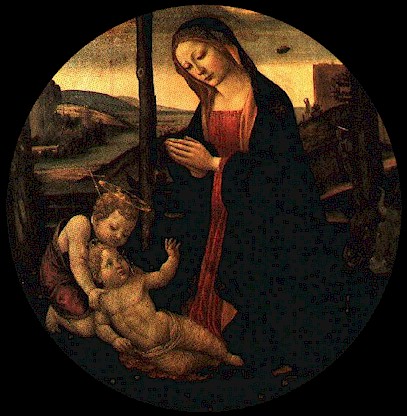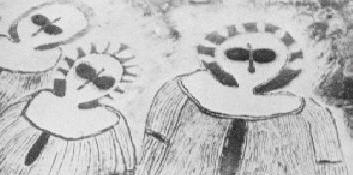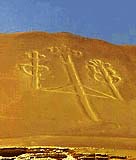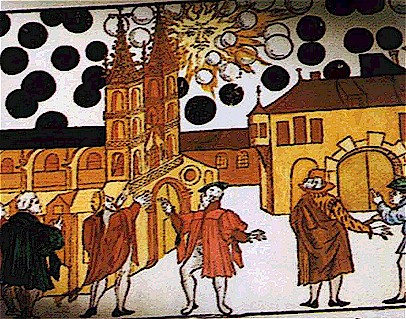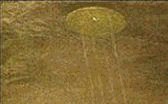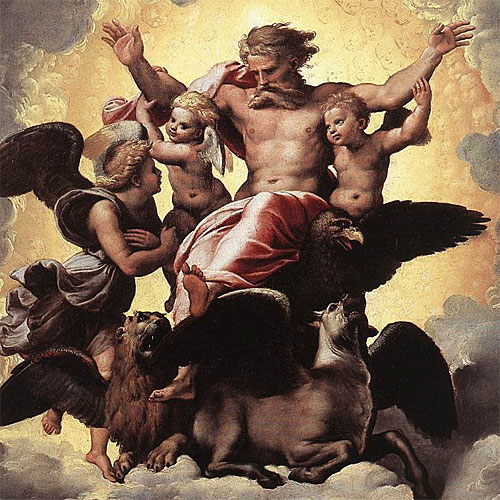Kita sering mendengar pelbagai kes serta cerita mengenai fenomena histeria atau kerasukan makhluk halus. Tetapi pernahkah kita cuba mengetahui apakah yang sebenarnya dimaksudkan dengan '
histeria' dan '
kerasukan'? Mengikut pengertian, histeria bermaksud gangguan neurosis yang mempunyai pelbagai gejala dan tanda, yang mungkin berbentuk emosi atau fizikal akibat dari perasaan takut atau gembira yang melampau, sedangkan rasuk merujuk kepada perbuatan merasuk, mengapit atau memadankan dua objek atau sebagainya (contoh tanggam pada tiang atau struktur binaan), bertujuan untuk memberi keteguhan pada struktur sesuatu, tetapi mengikut pengertian bidang paranormal ia lebih merujuk kepada kemasukan sesuatu unsur halus seperti Jin atau roh/semangat kedalam tubuh mangsa. Sungguhpun demikian, umumnya kedua istilah sering tersilap tafsir dan dianggap sama maksudnya.

Histeria selalunya diakibatkan oleh tekanan perasaan atau fikiran yang terlampau serta dipengaruhi keadaan sekeliling. Kebiasaanya histeria seringkali berlaku pada remaja samada yang masih menuntut, menjalani sesuatu latihan atau program, ataupun akibat dari perasaan ketakutan pada sesuatu atau pengalaman yang kadangkala memberi tekanan baik pada emosi atau minda. Kes-kes yang sering didengar selalunya berlaku di sekolah, universiti atau kem. Apabila seseorang itu menghadapi tekanan emosi atau minda tetapi tidak meluah atau menceritakan masalahnya menjangkau pada had-had tertentu, ledakan berlaku secara mendadak di luar kawalan seperti apa yang sering kita lihat sebagai contoh meracau, menjerit, kekejangan, mencederakan diri dan sebagainya, malah ada yang berakhir dengan tindakan luar kawalan hingga menyebabkan kes bunuh diri atau sebaliknya.
Apabila berlakunya ledakan emosi luar kawalan, individu terbabit mungkin akan menyebabkan pihak sekeliling panik lalu terikut-ikut dan sindrom ini seolah-olah seperti suatu gelombang wabak (wave plague) yang menyerang setiap individu berdekatan. Persoalannya, adakah histeria boleh merebak atau menular? Jika dilihat dari pelbagai faktor, sebenarnya histeria beradius besar (massive) adalah akibat dari perasaan terkejut atau
shock pihak kedua sehingga terbawa-bawa kedalam diri mereka. Sebagai contoh kes yang pernah berlaku di sekolah atau kampus walhal sebenarnya hanya seorang saja yang benar-benar mengalami tekanan atau kemurungan. Menurut Julia Borossa, seorang pensyarah serta penulis buku yang berkaitan dengan bidang psychoanalysis, histeria ialah
a descriptive category, has been applied in a variety of ways, across historical periods and cultural contexts. Puzzlingly, its referent has been simultaneously an illness with strange symptoms and certain disturbing forms of behaviour. Attempts to account for 'hysteria' have included pointing to a particular affliction which causes the womb to 'wander', to patients' propensity to lie and manipulate, to lesions of the nerves, to ecstatic states, to demonic possession, to forms of protest, to inexplicable epidemics. Artistic expression, seductiveness, wanting things in excess, behaving in a socially inappropriate way, partaking in crazes - all these have attracted the epithet 'hysterical'. Whether malady or maladjustment, the possibility of meaning many things in many ways runs through both usages of the term, which roughly correspond to the clinical and the common usages. Indeed, as we shall see, the two inform and shape one another. While the word 'hysteria' remains in current use, the formal diagnosis of hysteria, with its particular symptomatology, has largely ceased to be deployed in the course of the 20th century. However, the very symptoms that comprised hysteria have by no means disappeared, but are merely discussed and described elsewhere and otherwise.
As an illness, hysteria has had a long-standing association with the feminine. Although male sufferers were, at times, identified and discussed, it has primarily been seen as a women's disorder. A key aspect of hysteria's manifestation was that it involved the sufferer's body, in a way that was changeable, and could not be put down to any tangible cause. Some of the classic symptoms of hysteria included: a feeling of suffocation, coughing, dramatic fits, paralysis of the limbs, fainting spells, but also sudden inability to speak, loss of hearing, forgetting one's mother tongue, being proficient in languages that one did not know one knew, persistent vomiting and inability to take in food. In sum, it was a disease which appeared irrational, untrustworthy, and difficult to control.
The 19th century was the period of hysteria's heyday, and it was then that the metaphorical slippage between symptom and behaviour, the illness and its sufferers, came to the fore. Its direct effect was to unveil the location of hysteria within the realm of sexual politics. Within a predominantly patriarchal world-view, the hysteric came to embody femininity itself, as problem and enigma. This is the position from which Sigmund Freud approached her. The question, 'What does woman want?', which he famously posed in one of his late papers, can be seen as a continuation of his fruitful confrontation with the puzzling illness he first studied as a young doctor. Indeed, it is no exaggeration to state that Freud's encounter with hysteria and the hysterical patient lies at the very origin of psychoanalysis. Among psychosomatic conditions, only hysteria, with its unique expressiveness and ability to symbolise conflict and distress in a kind of alternate language, would fit the bill and prove to be, along with dreams, 'the royal road to the unconscious'.
Menurut Charcot pula, seorang pakar neurologi dari Perancis, beliau berkata:
"hysteria was caused by a functional disorder of the brain which caused symptoms, and which also rendered patients suceptible to hypnosis so that new symptoms can be produced by suggestion. Charcot, Later became more interested in the probablity of a psycological cause as a result of clinical studies by his pupil, Pierre Janet, who proposed that the disorder in hysteria has a tendency to dissociate, i.e. to loose the normal integration between various parts of mental functioning, together with a restriction of personal awareness so that the person became unaware of certain aspectes of psychological functioning that would otherwise be within his awareness. It is a illness known from the time of Greeks, although down through ages it has changed its meaning and dimension. Originally it was thought to be a women's disease, as the word hysteria signifies 'uterus', the uterus moved from one part of the body to another because of sexual frustration.
The hysterical reaction in modem psychopathology is explained as serving defensive function by which the individual escapes or avoids stressful situations. As a neurotic disorder, the symptoms of hysteria can take the form of widest variety. Although at one point of time the diagnosis of hysteria was not that frequent perhaps because medical knowledge had not advanced so much, the same has considerably changed nowadays.
Hysteria can be clinically grouped under two types: conversion and dissociate - in conversion hysteria the afflicted person can present physical symptom of psychological origin. In the absence of organic cause, the symptoms and features are intriguing and enigmatic.
Feature of hysteria are:
1. There can be hysterical convulsion (fit). 2. Sensory disturbances-loss of sensitivity. 3. Hypoesthesis (partial loss of sensitivity). 4. Hyperesthesis (excessive loss of sensitivity). 5. Analgesia (loss of sensitivity to pain) 6. Paresthenia (exceptional sensation, such as tingling) It includes blur of vision, photophobia, double vision, night blindness, and defective steropsis. The heart disturbances from total deafness to' selective one has also been found as conversion symptoms.
The visceral symptoms of this disorder are headache, lumps in the throat, choking sensation, coughing spells, bleaching nausea, sneezing, difficulty in breathing etc. Another enigmatic conversion syndrome. is pseudociasis (false pregnancy) in women who develop morning sickness, absence of period, fullness of breast, and bulging belly without being pregnant.
The dissociate hysteria, on other hand, is also a manifestation of underlying conflict. This is an escape behavior in which the individual gratifies his urges but denies the personal responsibility of his unacceptable behavior. There is a difference between hysterical amnesia and amnesia caused by brain pathology. In the later the registration and storage of infornation are impaired where as in the former the recall of registered infonnation is affected although the forgotten material is intact, beneath the conscious level.
Somnambulism is also another type of disorder where the individual walks in sleep but when he gets up the following morning does not remember the event. Fague called it "split personality". The two personality works independently in the same individual, one having no knowledge of the other. Multiple personality has similar features of dissociative hysteria. There may be one or more two personalities in an individual but their functions differ from one another, and no awareness of existence of the other"

Charcot ketika mengadakan demonstrasi mengenai histeria 1885
Bagaimana pula halnya tentang kes 'kerasukan'? Bagi paranormal dan dari segi pegangan agama, tidak kira apa pun, kerasukan merujuk kepada jisim halus yang memasuki tubuh lalu mengakibatkan perubahan 'host' atau perumah yang ketara seperti perubahan suara, meracau atau meronta, perubahan memek muka serta pertuturan dan sebagainya. Kerasukan sering berlaku pada gadis remaja ataupun dewasa dan ada diantara kes melibatkan lelaki. Pelbagai kaedah serta cara rawatan untuk memulihkan si mangsa atau pesakit dan ianya bergantung kepada pegangan kepercayaan agama masing-masing. Tetapi apa pula penjelasannya menurut sains? Menurut Melissa A. Bromwell, salah seorang pengkaji perubatan dan metafizik, beliau memberikan beberapa pandangan mengenai fenomena 'kerasukan' ini. Menurut beliau, kerasukan adalah:
"strange physical ailments or disfigurements; verbal outbursts, mostly obscene or sacrilegious in nature; violent behavior and vulgar behavior; bodily spasms and contortions; ability to speak languages never before studied; self-mutilation; "superhuman" abilities such as psychic abilities, abnormal strength, or an ability to perform behaviors out of the realm of human possibility such as levitation; cessation of normal bodily functions for periods of time, including breathing and heart beat; and a pronounced revulsion to symbols, places, people, objects, and ceremonies having any religious context. Other phenomena associated with the presence of a demon include an acrid stench; marked decrease in the temperature of the room which a possessed individual occupies; writing appearing out of nowhere; sounds and voices arising from nowhere; and objects moving on their own and destruction of objects in the room, without anyone having laid a hand upon them ((2), (3). Despite the striking quality of this description, the expansion of the fields of medicine and psychology has led to diagnoses other than demonic possession for individuals who present circumstances similar to those mentioned above. These sorts of cases are now readily explained in terms of abnormal functioning in the brain and nervous system. There are various disorders which may mimic demonic possession; these include schizophrenia (and other periods of psychosis), dissociative identity disorder, and Tourette syndrome ((4).
Schizophrenia is characterized by the presence of delusions, hallucinations, disorganized speech, disorganized or catatonic behavior, affective flattening or inappropriate emotional responses, avolition, and alogia. General psychotic episodes, such as might accompany mood disorders, can also closely simulate a state of demonic possession by hallucinations or delusions. The delusions can be ones of thought insertion, thought broadcasting, delusions of guilt, delusions of grandeur, such as being God (or a demon), or delusions that God (or a demon) is speaking to the person and giving commands for a special mission (5).
The resemblance between several of these criteria and demonic possession is rather striking. The inappropriate emotional displays seen in psychoses correspond to those frequently documented in cases of demonic possession where the possessed individual expresses either flattened affect or outbursts of extreme affects; a possessed individual will often laugh at situations which are morbid, such as injury to another individual, or crying and screaming when there appears to be no appropriate stimulus for such a response, such as being presented with a crucifix or holy water (6).
Psychosis is generally thought of as a break with reality; society will frequently consider individuals who believe themselves to be possessed as delusional and not "in touch with reality." An individual who appears to be possessed and claims to be a demon may be viewed as suffering from a delusion of grandeur. Family members and friends caring for possessed individuals can become extremely disturbed by the state in which the individuals present themselves and often request an exorcism as a last resort. One might think of this as an example of Folie à Deux, in which one individual develops a delusion while in a close relationship with another person who already has an established delusion; the delusion is of the same content for each individual (5). It is possible that the possessed individual initially suffers from a delusion and eventually convinces loved ones that the possession is real.
The paranoid thinking present in many instances of psychosis is similar to that of an individual who is possessed and fears all items, people, and situations that contain religious themes. An individual who is possessed will react violently to the presentation of anything with a religious context, out of fear that harm will come to them; the reaction is elicited merely from being exposed to something such as a Bible or a priest. The disorganized thinking and speech that often occurs during periods of psychosis may also resemble the seemingly nonsensical speech a possessed individual may show (6).
Individuals who suffer from schizophrenia predominantly marked by catatonic behavior often arrange their bodies in bizarre or inappropriate postures for long periods of time; they frequently engage in stereotypic motor activity or have very prominent mannerisms and facial expressions. Conversely, these individuals might refrain from any movement whatsoever for prolonged periods of time, as if in a trance. This might be similar to the bodily contortions and exaggerated expressions of emotion noted in cases of demonic possession, as well as to the hypnotic-like state observed in possessed individuals (1).
The superhuman strength often exhibited by individuals who are possessed might be explained by the presence of a bipolar disorder; bipolar disorders are frequently accompanied by psychosis, particularly during the manic episodes. Manic individuals exhibit abundant amounts of energy and often have abnormal strength, similar to what can be seen in an individual who is possessed.
Schizophrenia, or any form of psychosis, is currently thought to be the result of a malfunctioning dopaminergic system, either a system which is too active or a system which is too sensitive. The dopamine system has been implicated in movement and coordination, emotional response, and the ability to experience pleasure and pain (7). It would then seem quite likely that many purported cases of demonic possession are merely instances of dopamine systems failing to work properly, given the aforementioned abnormal motor and affect behavior. It also seems quite plausible that individuals who believe themselves to be possessed are in a state of severe ahedonia.
Another disorder which has frequently been misdiagnosed as demonic possession is dissociative identity disorder, formerly known as multiple personality disorder. The criteria for this disorder is the presence of two or more distinct identities or personality states, each with its own way of perceiving, relating to, and thinking about the environment and the self; at least two of these personalities or identities recurrently take control of the individual's behavior; and an inability to recall important personal information that is too extensive to be dismissed as ordinary forgetfulness (8). The separate identities involved in this disorder and the physical changes that denote dissociation could certainly reflect the abrupt change in personality manifested by those who appear to be victims of demonic possession (9).
A demon in someone who is possessed has its own purpose, own beliefs, morals, and attitudes, mannerisms, even its own style of speech, including a different voice. Each of these is distinct from those of the individual prior to possession and to an observer, it is clear that a change has occurred in the individual. In addition, an individual who suffers from demonic possession may not be able to recall the periods of time in which the demon manifests itself, resulting in blackouts and time loss (6). This is quite comparable to the manifestation of multiple personalities, each unique from the other, in an individual with dissociative identity disorder. The different personalities also have different motivations, ways of behaving, types of knowledge, and types of speech. The differing speech patterns between identities might partially explain the phenomenon of "speaking in tongues" often witnessed in victims of demonic possession. Time loss and blackouts are also extremely common to individuals with dissociative identity disorder; the unrecalled periods of time occur when another personality is in control (10).
Extreme suggestibility and hypnotizability are prevalent among individuals with dissociative identity disorder, which may be important if someone has suggested to an individual with the disorder that they are not mentally ill, but are in fact possessed by a demon. An individual with dissociative identity disorder who has had this suggested to them might come to believe they are inhabited by a demon (11).
Motor activities common to those with dissociative identity disorder include anesthesia, eye rolling (especially during switching to another personality), and pseudoseizures (11). These are behaviors that are commonly observed in individuals who are reported to be possessed by a demon; individuals who are possessed may be unable to feel pain in certain areas of their body and some of the distortions involved in possession include eyes rolling back and seizures (6).
The commonly accepted etiology of dissociative identity disorder is an early history of repeated trauma and abuse, often to horrific degrees (12). There is currently no biological theory concerning the origin of dissociative identity disorder; this creates both a direction for future investigations into the disorder and a possibility that demonic possession is an occurrence that cannot be explained in terms of the brain.
Another disorder that has probably been mistaken for demonic possession throughout time is Tourette syndrome, characterized by multiple motor and vocal tics (13). Motor tics can range in complexity from eye blinking to sticking out the tongue to rapid jerking of the body and writhing. The vocal tics can be sounds such as coughing, barking, growling or repeating words and phrases over and over again. Perhaps the most well-known symptom of Tourette syndrome is coprolalia, the screaming of obscene and foul language (14).
It is obvious how these behaviors can be misinterpreted as demonic possession; possessed individuals are often described as flailing and thrashing about and shouting obscenities, sexually aggressive phrases, violent threats, and sacrilegious statements.
There is also a high rate of comorbidity with obsessive-compulsive disorder in individuals who have Tourette syndrome (14). It seems likely that there would be a high frequency rate of obsessions with religion in individuals who claim to be possessed by a demon.
The origins of Tourette syndrome are thought to lie in either the dopaminergic system or the noradrenergic system. It is believed that the disorder results from either supersensitivity in the dopamine receptors or hyperactivity in the functioning of the norepinephrine system (14).
The concordance of the putative biological causes of schizophrenia and Tourette syndrome seem to imply some type of connection between the two disorders, and the phenomenon which they both imitate, i.e., demonic possession. It also lends credence to the belief that the brain is responsible for types of behavior which may initially seem remarkably beyond the realm of normal human behavior.
However, there is quite a bit about supposed demonic possession which cannot yet be explained by biology. This category includes such phenomenon as levitation, wounds appearing upon the victim that have not been inflicted by the self or another concrete source, knowledge of languages never before studied, sometimes never even heard, and psychic abilities such as knowing facts about other individuals that have never been met. In addition, the accompanying situations related to the area around possessed individuals do not seem to be explainable in terms of the brain or any aspect of biology; science cannot yet explain the distinct decrease in temperature of the room the individual occupies, the appearance of writing and sounds from an unseen force, and the movement of objects on their own (2).
One can come to two conclusions when faced with this evidence. The first is that the cause of such circumstances will eventually be determined by further study of the brains of reportedly possessed individuals. This might reveal that there is something biologically (and entirely secularly) unique about such individuals which allows them to be capable of creating such phenomena by themselves; in this case it could be determined that demonic possession is nothing but a myth perpetuated for centuries. On the other hand, the possibility that demonic possession is a real occurrence cannot yet be rejected; no thoroughly decisive evidence exists to the contrary. What is currently known about science cannot fully explain every situation reported to be a case of demonic possession, at least not by the methods which science currently employs. Until science can explain each detail, if indeed it ever can, one cannot dismiss the possibility that demonic possession is a real and true phenomenon". Terdapat pelbagai lagi pendapat serta teori dan penjelasan mengenai histeria serta fenomena kerasukan. Tapi apa yang ingin cuba dijelakan disini ialah kesedaraan individu untuk menilai sesuatu perkara samada ianya benar atau khayalan serta sengaja dibuat-buat untuk mendapat perhatian orang lain (sympathy) kerana telah banyak kes-kes yang serupa apabila dijalankan diagnosis ternyata kebanyakan mangsa mempunyai sejarah tekanan perasaan serta mental dan ada pula fenomena kerasukan yang memang tidak dapat dijelaskan melalui sains. Jika ini berlaku maka campurtangan bidang agama adalah disyorkan.
Artikel oleh
R Iskandar
ParaCrypt RSG






